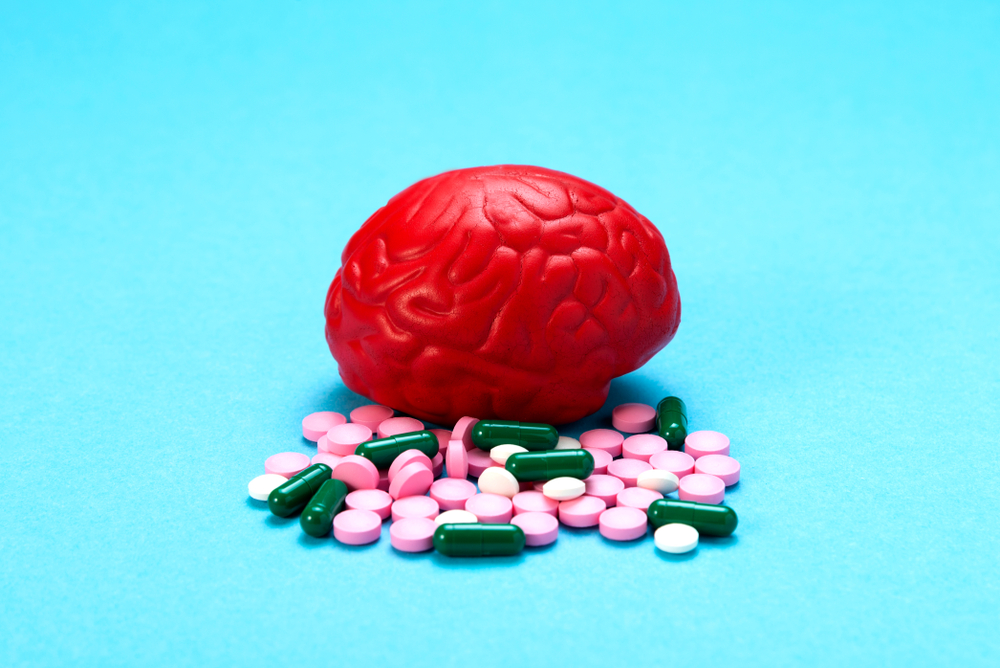In a world where we expect fast Wi-Fi and two-day shipping as the bare minimum, it’s no surprise that the immediacy of modern medicine has led to a situation where popping a pill can feel like the easiest solution to our problems. But what happens when convenience tips into over-reliance? In the U.S., it seems our penchant for quick fixes has led to a troubling trend: the overuse of certain medications.
1. Antibiotics

Antibiotics—the panacea of the 20th century that now finds itself at the center of a growing health crisis. While these drugs are lifesavers for bacterial infections, their overuse has led to antibiotic resistance, a looming threat to global health. According to the Centers for Disease Control and Prevention (CDC), at least 2.8 million people get antibiotic-resistant infections annually in the U.S. over here. This not only makes future infections harder to treat but also paves the way for superbugs that laugh in the face of our most potent drugs.
The problem stems from both patient demand and physician over-prescription, often for viral infections where antibiotics are as useful as bringing a spoon to a knife fight. It’s a classic case of good intentions gone awry, where the promise of immediate relief overshadows the long-term implications. As we edge closer to a post-antibiotic era, it’s clear that a more judicious approach to these medications is necessary. After all, even the best intentions can lead us down a slippery slope when unchecked.
2. Opioids

The opioid crisis has been a sobering chapter in American healthcare, revealing the dark underbelly of pain management practices. Originally hailed for their effectiveness, opioids like oxycodone and hydrocodone have become synonymous with addiction and overdose. The U.S. Department of Health and Human Services reports that over 10 million people misused prescription opioids in 2019, illustrating the scale of the problem. It’s a stark reminder that what starts as a well-meaning prescription can quickly devolve into a public health nightmare.
Over-prescription is often driven by a genuine desire to alleviate suffering, but it’s become clear that the risks frequently outweigh the benefits. The fallout is not just individual but societal, with families and communities bearing the brunt of opioid addiction. It’s a classic case of good medicine gone bad, accentuated by a healthcare system that often prioritizes quick fixes over sustainable solutions. The lesson here seems unequivocal: tread carefully and think long-term.
3. Sedatives

In a culture that glorifies busyness, it’s no wonder that sleep often feels elusive, making sedatives a go-to solution for the sleep-deprived masses. Medications like benzodiazepines, including Xanax, are often prescribed for their calming effects, which can be a godsend in the short term. These drugs can lead to dependency and withdrawal symptoms, making them a double-edged sword. The irony is palpable: a quest for rest that ends up with more unrest.
The overuse of sedatives isn’t just about the individual; it’s a societal issue that reflects our inability to slow down. As reliance on these medications grows, so does the potential for abuse and dependency, leading to a cycle that’s hard to break. There’s a growing need for alternative approaches to dealing with anxiety and sleep disorders—methods that don’t come with a list of potential side effects. After all, rest should soothe, not complicate.
4. Proton Pump Inhibitors

Proton pump inhibitors (PPIs) like omeprazole are the darlings of heartburn sufferers, offering relief from the fiery grip of acid reflux. But this relief comes at a cost, as studies have shown these medications are often overused and linked to a range of side effects. Many people take PPIs without a clear medical indication, raising questions about their necessity. And it’s not just a matter of popping a harmless pill; long-term use has been associated with increased risks of kidney disease and osteoporosis.
While the allure of a quick fix is strong, it’s important to weigh the potential downsides. Many individuals find themselves on PPIs indefinitely, without exploring other solutions like dietary changes. The overuse of these medications serves as a reminder that convenience can sometimes mask deeper issues, leading us to overlook sustainable lifestyle changes. It’s a call to reassess our approach to health, where prevention becomes as important as treatment.
5. Anti-Depressants

In a world that often feels overwhelming, antidepressants are a beacon of hope for many, providing a much-needed respite from the weight of mental health struggles. Yet, the ubiquity of these prescriptions raises questions about over-reliance, especially when prescribed without accompanying therapy. According to the National Center for Health Statistics, one in eight Americans over the age of 12 takes an antidepressant, a statistic that underscores their prevalence. While these medications are life-changing for some, they aren’t a one-size-fits-all solution.
The danger lies in viewing anti-depressants as a cure-all, rather than one part of a comprehensive treatment plan. Over-prescription can obscure the need for holistic approaches that include therapy, lifestyle changes, and community support. The conversation around mental health is evolving, and with it, our understanding of what constitutes effective treatment. It’s a reminder that while medication can be crucial, it should be part of a broader strategy for wellbeing.
6. Statins

Cholesterol-busting statins are a staple in the world of cardiovascular health, credited with lowering the risk of heart attack and stroke. But as their popularity has surged, so too has concern over their widespread use, particularly in cases where lifestyle changes might suffice. While statins like atorvastatin are undeniably effective, they come with baggage—muscle pain, digestive issues, and even an increased risk of diabetes. It’s a classic case of a good thing being too much of a good thing.
The issue isn’t with statins per se, but with how readily they’re prescribed, often without a concerted effort to address underlying lifestyle factors. Diet and exercise are powerful tools in the battle against high cholesterol, yet they often play second fiddle to pharmaceutical interventions. The challenge lies in finding balance, ensuring that medications complement rather than replace healthier living. It’s a nuanced dance that requires careful consideration of individual needs.
7. Nonsteroidal Anti-Inflammatory Drugs (NSAIDs)

NSAIDs like ibuprofen and naproxen are the unsung heroes of pain relief, easily accessible and incredibly effective. However, the convenience that makes them popular also contributes to their overuse, often with unintended consequences. The National Kidney Foundation warns that long-term use of NSAIDs can lead to kidney damage, ulcers, and increased blood pressure. It’s a stark reminder that even over-the-counter medications can pack a punch if used indiscriminately.
The ease of access to NSAIDs often leads to a casual attitude towards their consumption, with many people unaware of the potential risks. While they are invaluable for temporary relief, over-reliance can mask underlying health issues that require attention. The challenge is to shift perspectives, recognizing these medications as powerful tools that need to be used judiciously. It’s about respecting the potency of what we put into our bodies, even when it comes in a small, familiar package.
8. Corticosteroids

Corticosteroids like prednisone are the heavy hitters in the world of anti-inflammatory drugs, tackling conditions ranging from asthma to arthritis with impressive efficacy. However, their power comes with a hefty list of potential side effects, particularly when used long-term. Issues such as weight gain, mood swings, and increased infection risk can turn what feels like a miracle drug into a cause for concern. It’s a delicate balance between efficacy and safety, one that requires careful consideration.
The overuse of corticosteroids is frequently driven by their effectiveness, leading to a tendency to reach for them as a first-line treatment. But their long-term use can sometimes do more harm than good, emphasizing the need for alternative approaches. The conversation around corticosteroids underscores the importance of informed decision-making in healthcare. It’s about understanding the full picture and making choices that prioritize long-term health over temporary relief.
9. Diabetes Medications

Medications like metformin have revolutionized diabetes management, offering hope to millions battling this chronic condition. Yet, their overuse, particularly in cases where lifestyle modifications could be equally effective, has raised eyebrows. The American Diabetes Association highlights the importance of diet, exercise, and weight management in conjunction with medication. While pharmaceuticals are crucial for many, they should not overshadow the role of lifestyle in managing the disease.
The challenge lies in an approach that often prioritizes medication over holistic management. Over-reliance on drugs can lead to complacency, with individuals missing out on the benefits of sustainable lifestyle changes. It’s about striking a balance between medication and healthy living, recognizing that the two should work hand-in-hand. The conversation around diabetes medication serves as a reminder that while pills can help, they’re most effective when part of a broader strategy.
10. Blood Pressure Medications

High blood pressure is a silent killer, making antihypertensive drugs a crucial component of many healthcare regimens. However, the tendency to lean heavily on medications like ACE inhibitors can sometimes overshadow the role of lifestyle changes. The American Heart Association emphasizes that diet and exercise can significantly impact blood pressure, yet these often take a backseat. The result is a healthcare approach that can feel more reactive than proactive.
Over-prescription of blood pressure medications isn’t just about individual health; it’s a reflection of broader healthcare practices that often prioritize immediate results. The risk is that we become reliant on medications without addressing the root causes of hypertension. The need for a balanced approach is clear, one that integrates medication with lifestyle changes for optimal health outcomes. It’s about being proactive, not just reactive, in our approach to hypertension.
11. Antacids

Antacids are the go-to solution for heartburn and indigestion, offering quick relief at the drop of a hat. However, their overuse can lead to a condition known as acid rebound, where stomach acid levels increase after stopping the medication. The Cleveland Clinic highlights that frequent use can mask underlying issues that require medical attention. It’s a classic case of treating the symptoms rather than the root cause.
The convenience of antacids often leads to their misuse, with individuals reaching for them as a first resort rather than exploring other options. This can perpetuate a cycle of dependency that overlooks potential dietary or lifestyle changes. It’s about shifting the narrative from quick fixes to long-term solutions, recognizing that immediate relief isn’t always the best course of action. The conversation around antacids serves as a reminder of the importance of addressing the underlying issues, not just the symptoms.
12. Thyroid Medications

Thyroid disorders are a common health concern, with medications like levothyroxine playing a crucial role in management. Yet, the rising number of prescriptions has sparked debate about over-diagnosis and treatment. The Endocrine Society suggests that not all cases require medication, particularly mild hypothyroidism. The key is a nuanced approach that considers individual patient needs rather than a one-size-fits-all solution.
Over-prescription of thyroid medications can lead to complications, including increased risk of osteoporosis and heart problems. It’s a reminder of the importance of careful diagnosis and treatment planning, ensuring that medication is truly necessary. The challenge lies in balancing the benefits of treatment with potential risks, emphasizing the importance of personalized healthcare. It’s about making informed decisions that prioritize patient health and well-being.
13. Asthma Inhalers

Asthma inhalers are a lifesaver for many, providing immediate relief from the debilitating effects of an asthma attack. However, their frequent use raises questions about the underlying causes of asthma and the role of preventative measures. The American Lung Association points out that while inhalers are essential, they should be part of a broader treatment plan that includes identifying and avoiding triggers. It’s about understanding that while inhalers are crucial, they are not the complete solution.
The overuse of asthma inhalers can lead to a sense of complacency, where the immediate relief they provide overshadows the need for long-term management strategies. This can result in a cycle of dependency that fails to address the root causes of asthma. The key is a holistic approach that combines medication with lifestyle changes and preventative measures. It’s about seeing the bigger picture and understanding that asthma management is more than just reaching for an inhaler.

Abisola is a communication specialist with a background in language studies and project management. She believes in the power of words to effectively connect with her audience and address their needs. With her strong foundation in both language and project management, she crafts messages that are not only clear and engaging but also aligned with strategic goals. Whether through content creation, storytelling, or communication planning, Abisola uses her expertise to ensure that her messages resonate and deliver lasting value to her audience.


